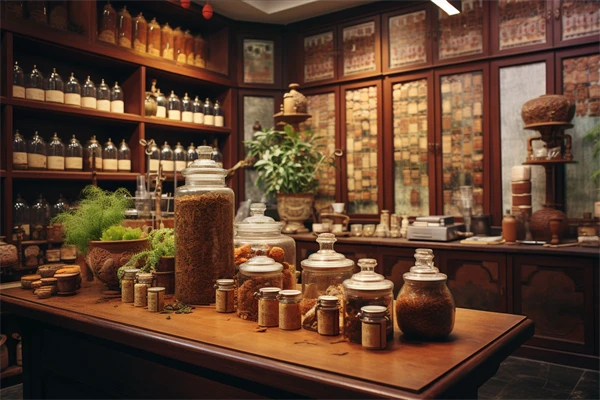
Traditional Chinese Medicine (TCM) therapy is a comprehensive medical system that has been practiced for thousands of years in China. It includes various treatment methods, among which TCM theory and techniques play a vital role in restoring health and balancing the body's energy flow. This article will explore the key aspects of TCM therapy including acupuncture, herbal medicine, tuina, and cupping therapy.
Acupuncture, often regarded as the most well-known TCM therapy, involves inserting thin needles into specific points on the body. These points are believed to be connected to channels, or meridians, through which energy flows. By stimulating these points, acupuncturists aim to harmonize the energy and restore balance. Acupuncture has been effective in treating various conditions such as pain, insomnia, digestive disorders, and even infertility. Many clinical studies have shown its efficacy, and it is increasingly recognized and used worldwide.
Another acupuncture technique is electroacupuncture, where a small electric current is applied to the needles. This method is particularly beneficial for pain relief, and it is often used alongside traditional acupuncture for better results.
Moxibustion is another form of acupuncture therapy. It involves the burning of dried plant materials, usually mugwort, near specific acupuncture points. By applying heat, moxibustion stimulates the flow of energy and blood, promoting healing and reducing pain.
Herbal medicine is an essential part of TCM therapy. It uses natural substances such as plants, minerals, and animal products to restore balance and address specific health conditions. TCM practitioners combine different herbs to create customized formulas tailored to individual patient needs.
TCM herbs are known for their holistic approach, targeting not only the symptoms but also the root cause of the illness. They are commonly used to regulate the body's internal organs, boost the immune system, and improve overall well-being.
However, it is crucial to consult a qualified TCM practitioner before using herbal medicine, as incorrect combinations or dosages can have adverse effects.
Tuina, also known as Chinese therapeutic massage, is another important component of TCM therapy. It involves various manual techniques, including pressing, kneading, rolling, and pinching, to manipulate the body's soft tissues and energy channels.
Tuina works by promoting the flow of Qi, or vital energy, through the meridians, relieving pain, and reducing muscle tension. It is widely used for musculoskeletal disorders, sports injuries, and stress-related conditions.
Tuina techniques can be combined with herbal medicine or acupuncture to enhance the effectiveness of treatment. The therapist's skill and knowledge of TCM theory are crucial in providing targeted and precise manipulation.
Cupping therapy involves placing heated glass cups on the skin to create a suction effect. This suction draws stagnant blood to the surface, promoting circulation and relieving congestion.
During cupping therapy, the cups may be left stationary or moved across the body's surface. The technique leaves temporary circular marks on the skin that may take a few days to fade. Cupping is commonly used to treat respiratory conditions such as the common cold and asthma, as well as musculoskeletal pain and sports injuries.
Traditional Chinese Medicine therapy encompasses various treatment modalities, each with its unique benefits. Acupuncture, herbal medicine, tuina, and cupping therapy are just a few examples of the diverse range of therapies used in TCM. They offer holistic approaches to healing, aiming to restore balance and promote overall well-being. As TCM gains recognition globally, it is essential to seek professional guidance from qualified TCM practitioners to ensure safe and effective treatment.
(P原中文:中医理疗英文缩写文章,字数600汉字左右,全文使用中文输出,段落用P标签包含,不能有政治敏感话题,正文开始,请从至少4个方面对文章做详细的阐述,每个方面都要有3个以上的自然段;后文章结合标题对全文进行总结归纳。段落用P标签,输出的样式需要按照下面的要求对文章内容进行处理:4个小标题使用进行包裹。) 建议反馈
建议反馈
建议反馈 您的每一条建议,我们都认真对待

返回顶部 快速回到顶部
